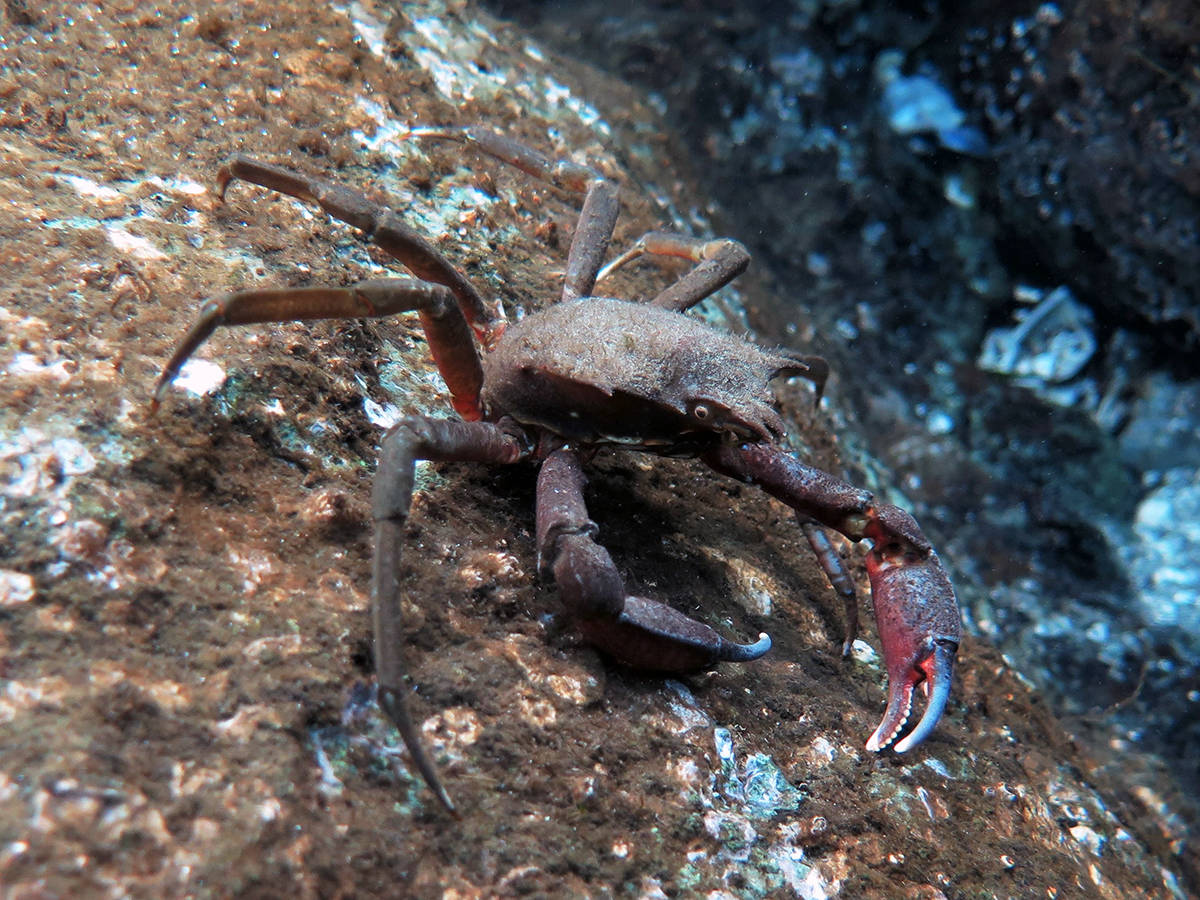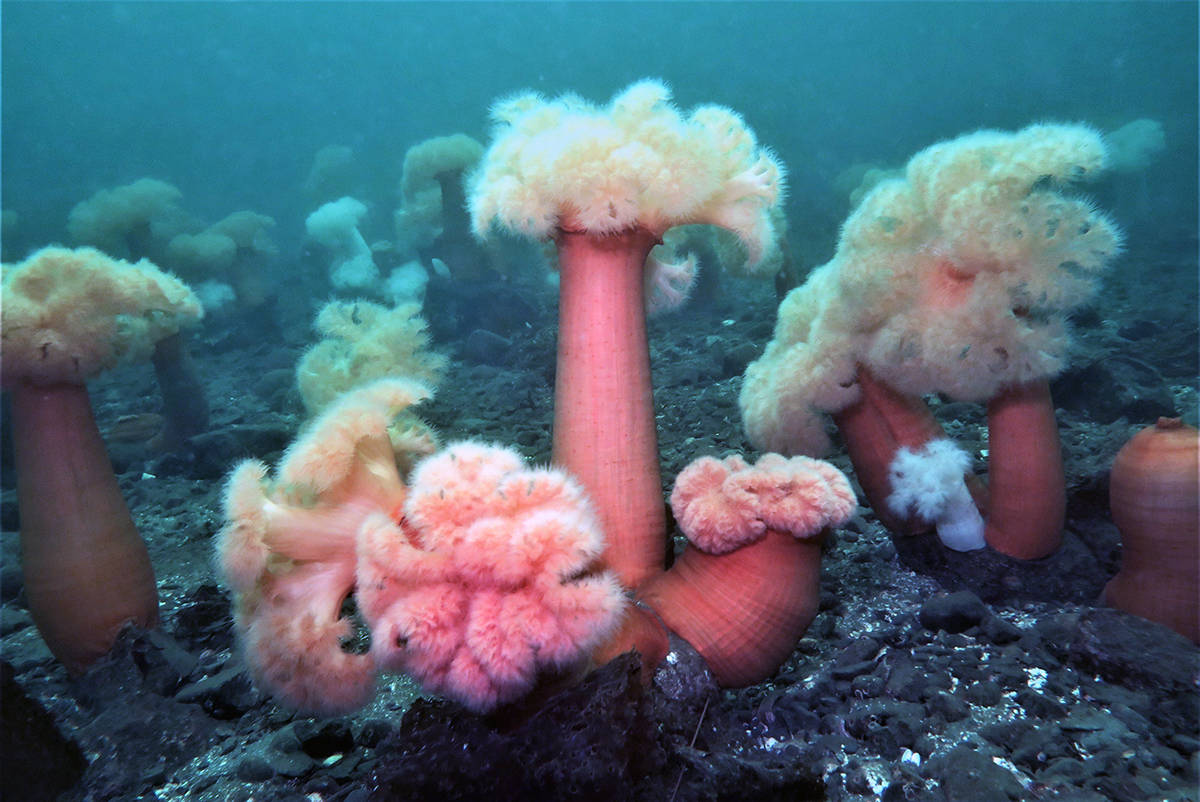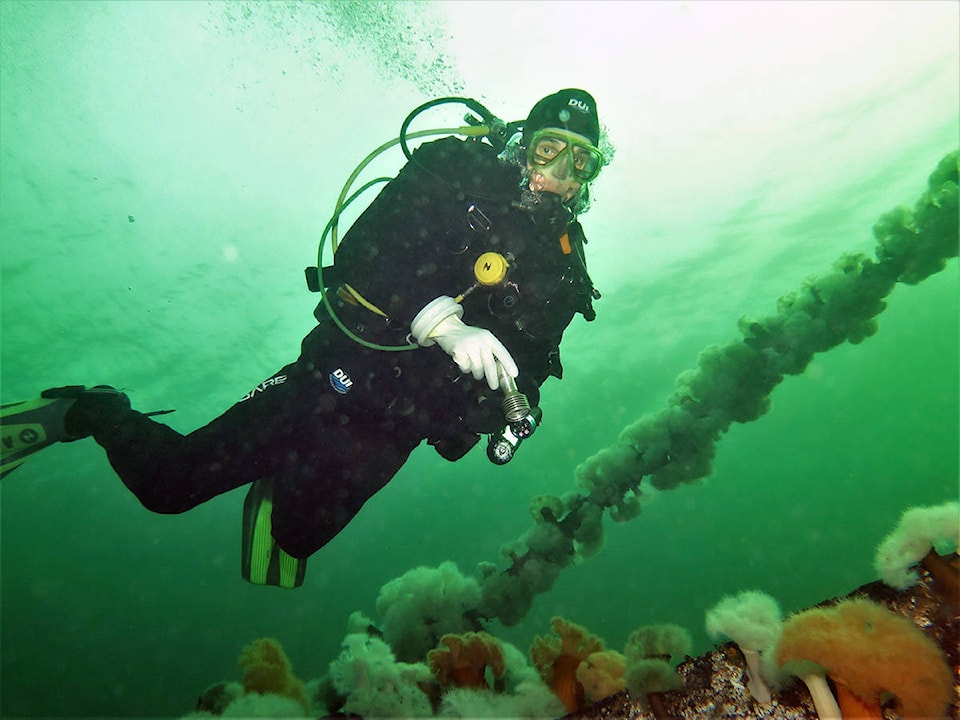Gordon Bell and Kathleen Fenner had a 65-minute dive in Chemainus by Hospital Point to the barge on New Years Day.
“We were pleased with the visibility and I had the camera with me,” noted Fenner.
Following are some of her observations and photos for a greater appreciation of the undersea world nearby. Not all the descriptions are accompanied by photos.
Studdly
Studdly is the name we have given to a male Scalyhead Sculpin. This is a small species of fish, maximum of four inches, where the males guard the eggs. Last year we witnessed Studdly twice with females. Each female will lay eggs that have a bit of a different colour hue to them. We watched the number of eggs clutches increase from only one clutch (he had a female with him when we first saw him with only one clutch) until later in the season when we counted 10 different colours of egg clutches.
Studdly on New Year’s Day was looking to seduce some more females of his species. After looking at me, he sort of hid in his shell where he has two egg clutches and obviously was not interested in me. He is a fish with a purpose and obviously good at what he does!
Jan. 1
My dive buddy Gordon Bell was at a depth of about 45 feet on New Year’s Day and above the barge that is closest to shore from Hospital Point in Chemainus. There are four barges that sank out there and now all have life on them. We have only explored on two and this one, the one closest to shore has the most life. When we have good visibility days, it is stunningly beautiful down there. The norm is to find dozens of species of fish and invertebrates we are able to identify. The number of fish greatly increases in the summer.
Barge 1
You can see how from small barnacles the wooden barge has now evolved to be home for hundreds of plumose anenomes. New Year’s was a special day as you got to see the ocean floor and the surface, which isn’t the normal experience.
You could see some of the structures hanging from the barge. The dive is for experienced divers as you wouldn’t want to get tangled in anything. The barges were not prepped to be sunk as artificial reefs which requires extra caution and intriguing finds, like an octopus living in a pipe.
Corner
A picture taken at the corner of the barge exposes how creatures are making their home underneath the barge. Extended crab legs could be seen on the left side of a photo I took.
Floor
Vibrant colour covers the ocean floor in Chemainus. Starting in about 35 feet of water and half way between Kin Beach and Hospital Point, you come upon a beautiful anemone field. Some of these anenomes get to be close to three feet tall. We are lucky in Chemainus to have such a mix of the white and vibrant orange. Our normal experience has been to find predominantly one colour or the other, but in Chemainus waters we have a bright mix of colour.
Northern Kelp Crab
These small crabs are numerous in the shallows. They can easily be spotted on the rocks at Hospital Point.
White lined Dirona
This is one of our beautiful sea slugs in Chemainus, a White lined Dirona. When you dive, you learn that slugs can be quite beautiful. We have a huge selection of nudibranches, sea slugs, that make the Chemainus waters their home.
Striped Nudibranch
This is another one of our beautiful sea slugs.
Worm
Did you know a worm could be so beautiful? We saw a Northern Feather Duster Worm attached to the sunken barge.
Under the Barge
Colours and life abound both on the topside of the sunken barge and the underside! You can see plumose anenomes, northern feather duster worms, as well as other invertebrates in a photo I took.
Anemone field
Getting to the sunken barges requires some underwater navigation. On our underwater swim to the barges we always go through the anemone fields. It’s nice to see the beautiful colours that resemble spectacular flowers when topside is a grey dismal day.
Bell and Fenner were back diving the barges Feb. 3 in Chemainus.
“The Padded Sculpin on eggs was a fun find,” noted Fenner. “I’m already getting feedback from some experts that have never been able to see this.
“I’ve been struggling to get a picture that exposes how vast and numerous the Giant Plumose Anenomes are in Chemainus. I find the anenome field so beautiful and such a contrast from the grey we are seeing on land lately.”


